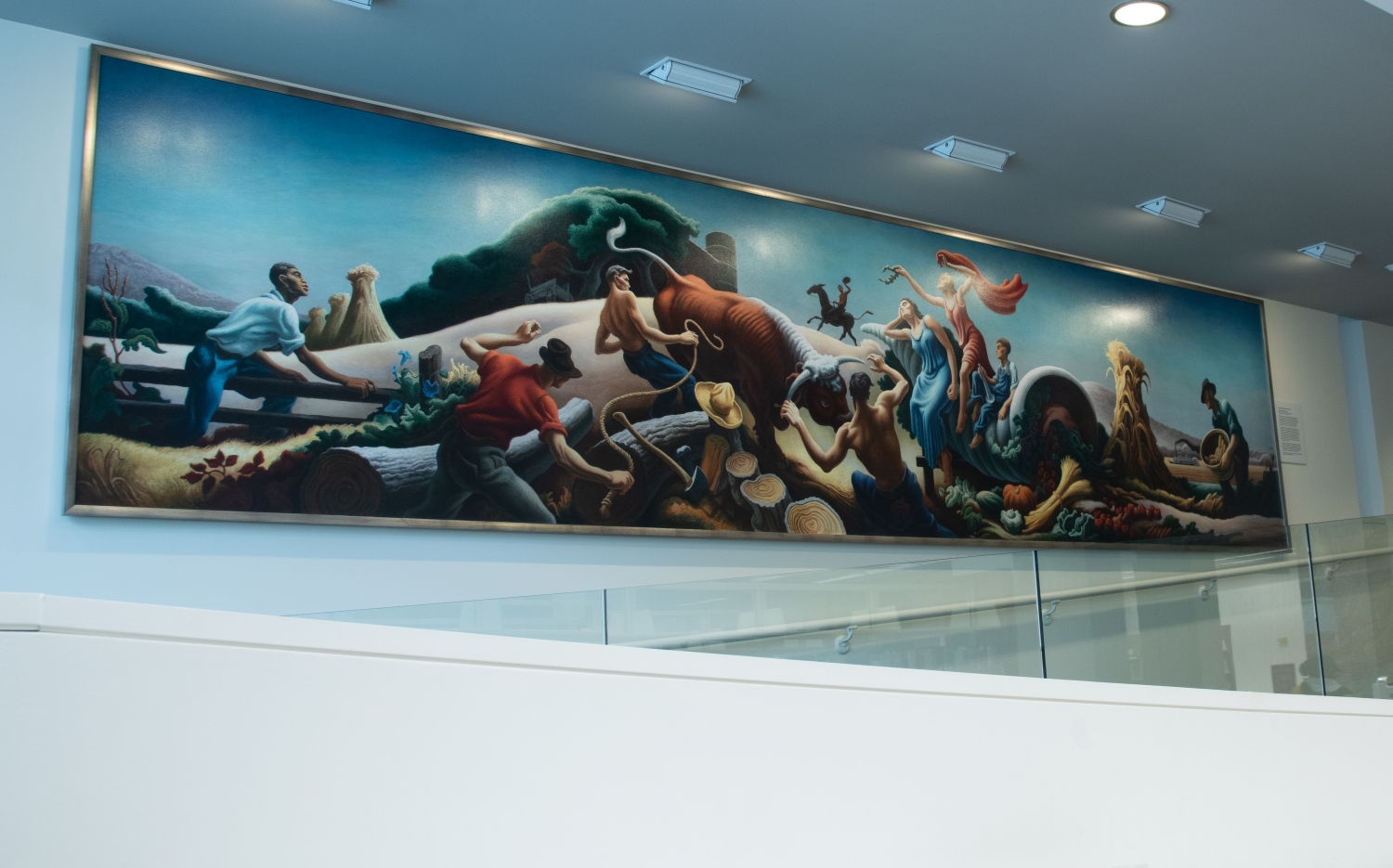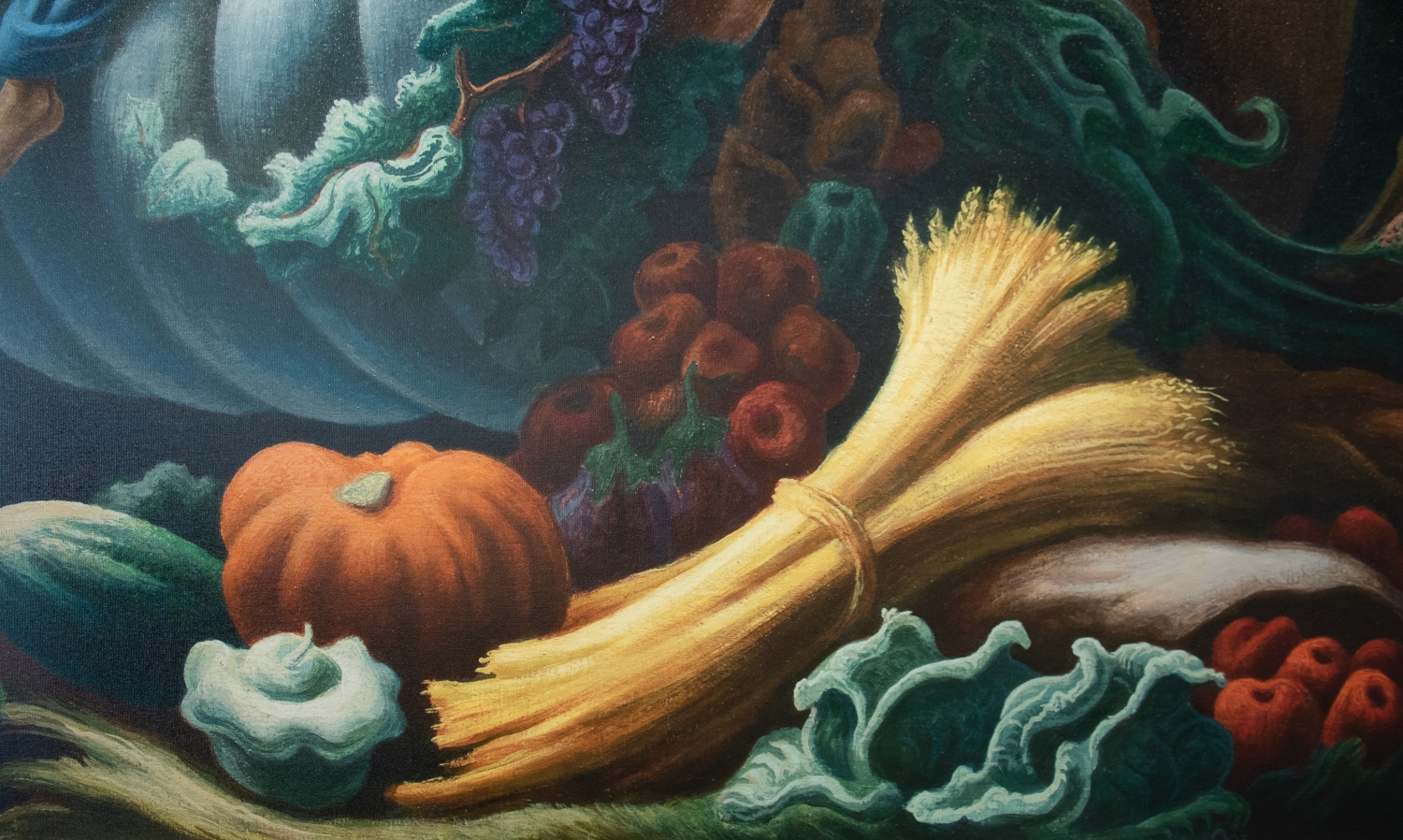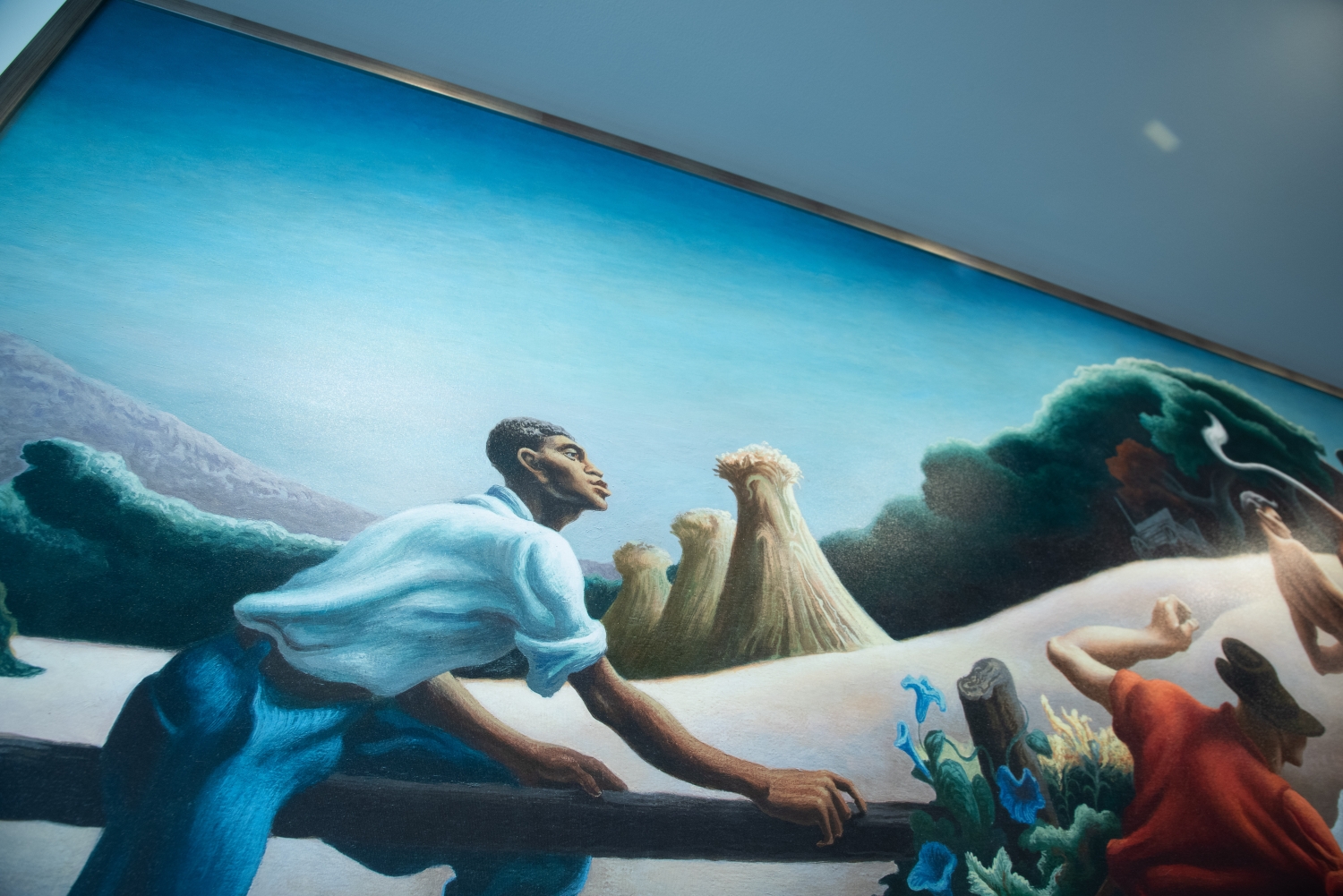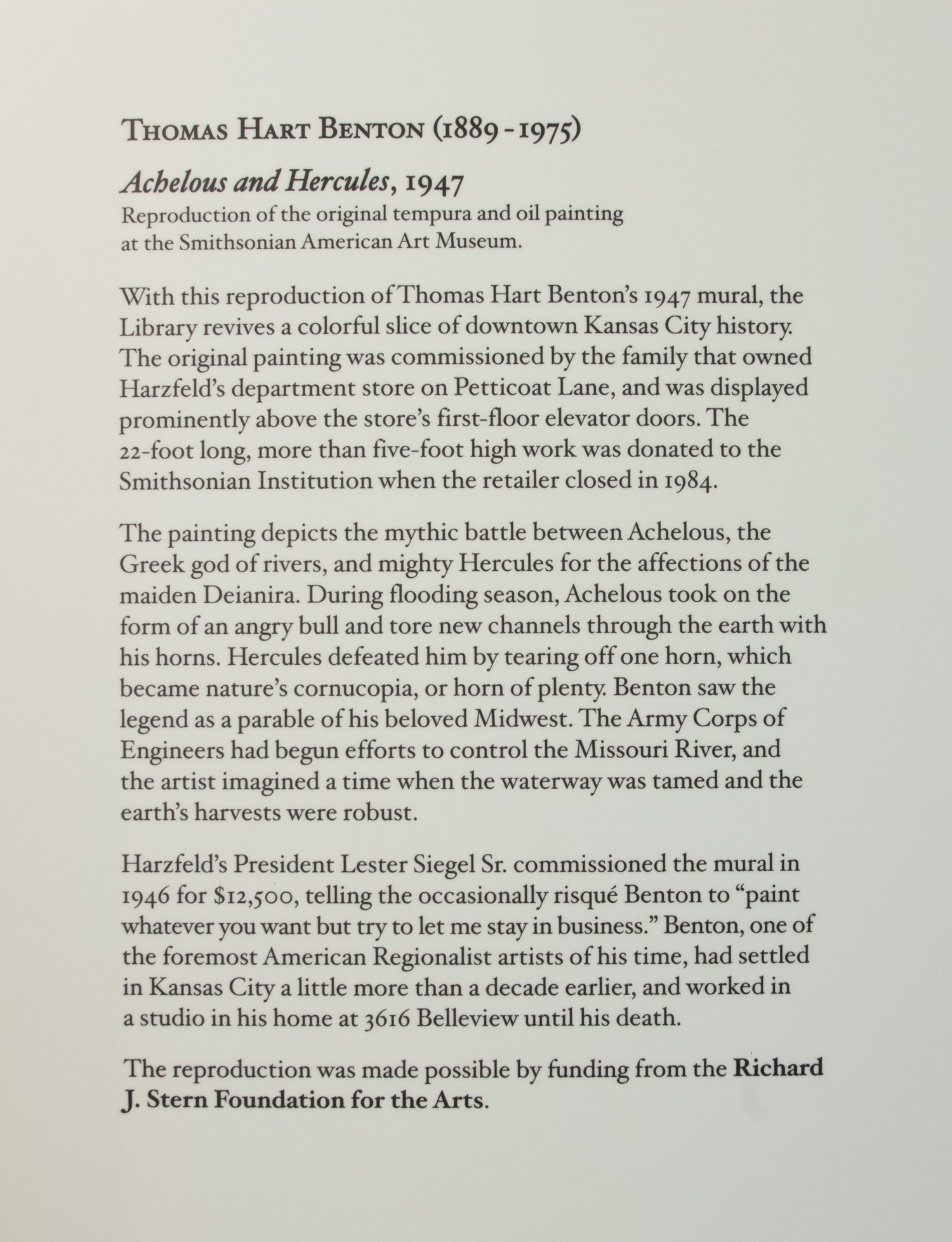Thomas Hart Benton Mural
Thomas Hart Benton was at the forefront of the Regionalist art movement. His paintings portrayed a fluid motion to both landscape and sculpted figures, capturing every day scenes in his North American visual narratives. Benton was born on 1889 in Neosho, Missouri, and spent much of his adolescence in this state. These Midwestern roots can be seen strongly within the context of his work. Benton studied both within the United States, attending The School of The Art Institute of Chicago, and later he traveled abroad to France, studying at the Académie Julian in Paris. Benton lived in multiple areas of the United States during his life, but settled in Kansas City, Missouri where he briefly taught at the Kansas City Art Institute. Benton died in 1975 at work in his studio, as he completed his final mural, The Sources of Country Music, for the Country Music Hall of Fame in Nashville, Tennessee.
This mural is a reproduction of Benton's original painting, Achelous and Heracles, now displayed at the Smithsonian American Art Museum. The painting was executed in egg tempera and oil on canvas, and affixed to a plywood panel. It was formerly displayed at Harzfeld's department store in Kansas City, Missouri. This mural was the first of Benton's paintings on a river-related theme. The reproduction is on display near the Genevieve Guldner Gallery and adjacent to ONE NORTH, the Library’s technology and digital engagement hub.
The central figure of this mural painted in 1947, is the muscular, shirtless "Hercules" grappling with the horns of the bull. A second man, also garbed in blue jeans and no shirt, stands near the bull's haunch and grips the end of a rope that roils into another man's hand in the foreground, where the work of woodchopping has been disrupted. The bull's tail points into the rushing, wavelike woods that flow out of the distance; a barn and silo the materialize from the woods to the right. The curvalineal line created by the rope and tail visually connect the woodlands and the timber.
The right half of the panel is dominated by a large cornucopia full of harvest abundance on which a dark-haired woman lounges, leaning on her elbow with her eyes closed. Above her, stands a blonde figure holding a wind-blown piece of red drapery overhead, extending her right hand to proffer a laurel wreath in mid-air. This section of the mural brings together two communicative gestures: the presentation of the wreath, and the salutation of a silhouetted mule-mounted rider in the background who raises his hat in acknowledgment or joy.
A boy, dressed in overalls, sits next to the women on the cornucopia and holds a white cone. He is mirrored to the far left of the mural by an adult African-American who leans on a split-rail fence and watches the scene, head lifted in poised anticipation. Three sheaves rise up in the landscape behind him. A fourth sheaf appears in the foreground to the right, where a man kneels with a bushel of corn ears, ready to add to the harvest bounty. Finally, a paddle steamer navigates the placid river in the background, another example of how the river is tamed.
in oil and tempura depicts a bluejeans-wearing Heracles (Hercules in Roman mythology) wrestling with the horns of a bull, a shape the transmuting river god Achelous was able to take. The myth was one of the explanations offered by Greco-Roman mythology for the origin of the cornucopia, a symbol of agricultural prosperity. Benton innovatively sets the scene during harvest time in the U.S. Midwest.











